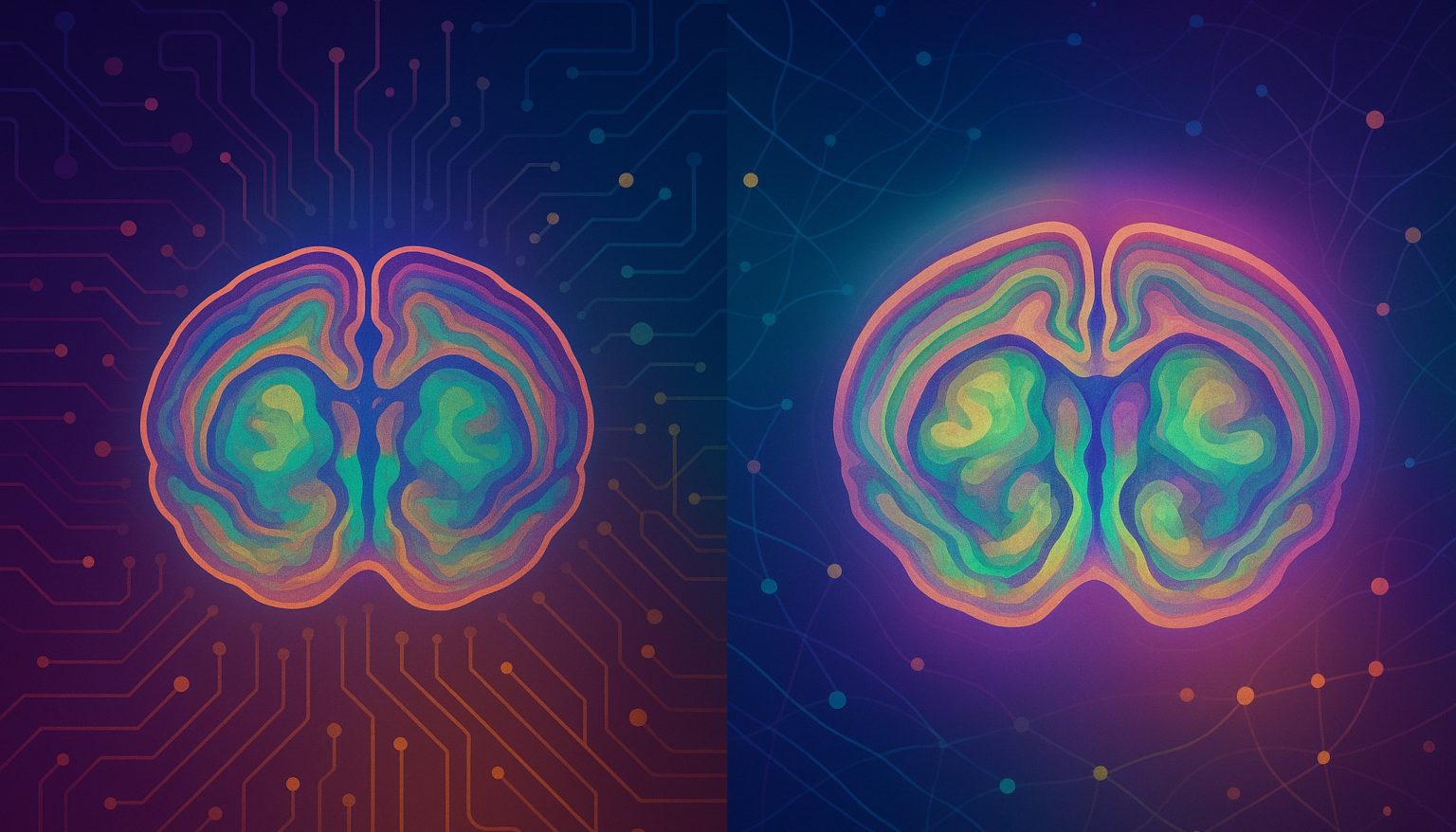AI Revolutionizes Brain Mapping: 1,300 Regions of Mouse Brain Discovered
In a groundbreaking development that merges neuroscience with artificial intelligence, researchers have created one of the most detailed maps of the mouse brain ever produced, identifying an astonishing 1,300 regions and subregions. The collaborative effort between the University of California at San Francisco and Seattle’s Allen Institute for Brain Science leverages AI technology similar to ChatGPT to analyze vast amounts of brain cell data. “Our model is built on the same powerful technology as AI tools like ChatGPT,” explains senior author Reza Abbasi-Asl, a UCSF neuroscientist. “Both are built on a ‘transformer’ network which excels at understanding context.” The study, published in Nature Communications, represents a significant leap forward in our understanding of brain organization and could eventually lead to more precise treatments for neurological disorders.
The mapping breakthrough relies on an AI model called CellTransformer, which processes enormous datasets about brain cell locations and functions. By analyzing spatial transcriptomics data from approximately 9 million cells across more than 200 tissue sections from four mouse brains, the AI determined which cells belong to the same “neighborhood.” Dr. Bosiljka Tasic, director of molecular genetics at the Allen Institute for Brain Science, likens this to moving from a map showing only continents or countries to one revealing states, cities, and even neighborhoods. “What we’re saying is, let’s take any cell and ask, ‘Who are the neighbors?’ And then, based on the commonality of the neighbors, call it a region,” she explains. The researchers first programmed the model to identify 25 brain regions, then 670, and finally 1,300 regions and subregions – many of which had never been documented before.
The significance of this mapping effort extends far beyond academic curiosity. “Location is everything in the brain,” emphasizes Tasic. “Defining the geography of the brain, and then defining all these regions and their functions, not only leads to better understanding but also better ability to treat.” Traditional brain mapping has typically relied on human interpretation of brain anatomy, but the explosion of data about individual brain cells has necessitated AI assistance. Some newly identified subregions are located in the midbrain reticular nucleus, which processes sensory and motor information, and in the superior colliculus, which handles sensory information and initiates movements to focus on objects of interest. These previously uncharted territories may hold keys to understanding complex brain functions and disorders.
The research represents a remarkable convergence of technological capabilities. “We are at a point where we have amazing experimental technology,” Tasic notes. “Next-generation sequencing has completely revolutionized our field. Our way to define cell types – the fact that you can measure thousands of genes per cell and define cells that are similar as a cell type – has transformed biology.” This technological revolution, coupled with software that can process high-dimensional data, makes this “an amazing time for a neuroscientist,” according to Tasic. The CellTransformer model excels at finding patterns in massive datasets that would be impossible for humans to process manually. At each level of resolution, the AI’s brain maps matched what had been previously defined by human experts, validating its accuracy before it ventured into uncharted territory.
Looking ahead, the researchers believe they can push CellTransformer to produce even more detailed brain maps. “Now, the question is, which ones are meaningful, in what way, and what do they represent biologically?” Tasic wonders. The team also faces the challenge of naming newly characterized subregions: “Just imagine that you came to a new land, and you are seeing there is this and there is that. But now I need to name it. Now I need to see what else is around,” she explains. Perhaps most exciting is the potential to integrate this cell-type map with others that trace connections between cells or patterns of brain activity. Tasic envisions “more systematic data collection, more systematic data analysis, and more multimodal models – models that will not only measure gene expression and cell type, but connectivity and productivity, and define brain regions based on all of those.”
While the AI-based techniques developed for mouse brains are “absolutely extendable to the human brain,” Tasic cautions that mapping the human brain at a similar level of detail may take another decade. “The human brain is huge, so that’s one problem… It will take maybe a decade more to just collect data about the full human brain at the level of detail that we did for the mouse.” Nevertheless, the implications for human medicine are profound. More detailed maps of the brain’s cellular structure could lead to more targeted drug treatments with fewer side effects. “We always want to go toward better, more precise brain therapies, but in order to do that, you need to know where you need to interfere, what went wrong in what place, and what you need to fix,” Tasic explains. “And if you don’t have the map, how are you going to know where it is?” This research, led by UCSF’s Alex Lee as principal author, demonstrates how AI is not just changing how we interact with technology, but fundamentally advancing our understanding of the most complex organ in the body – the brain.


